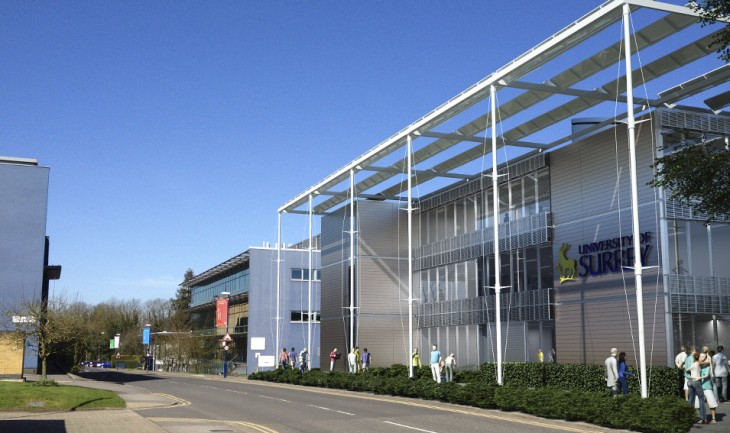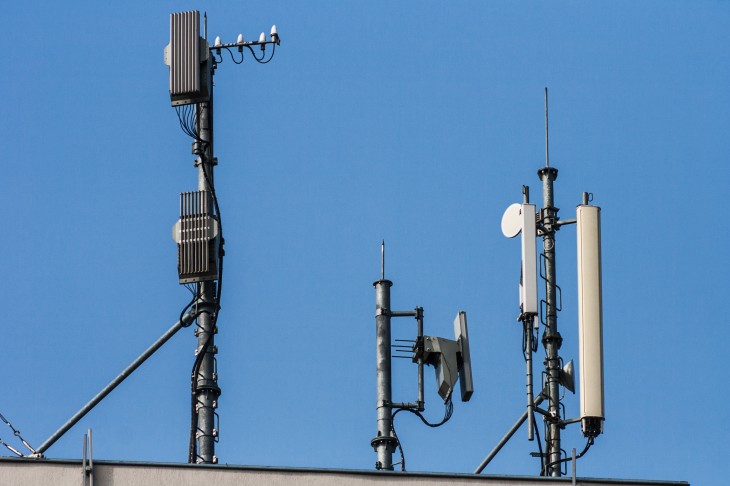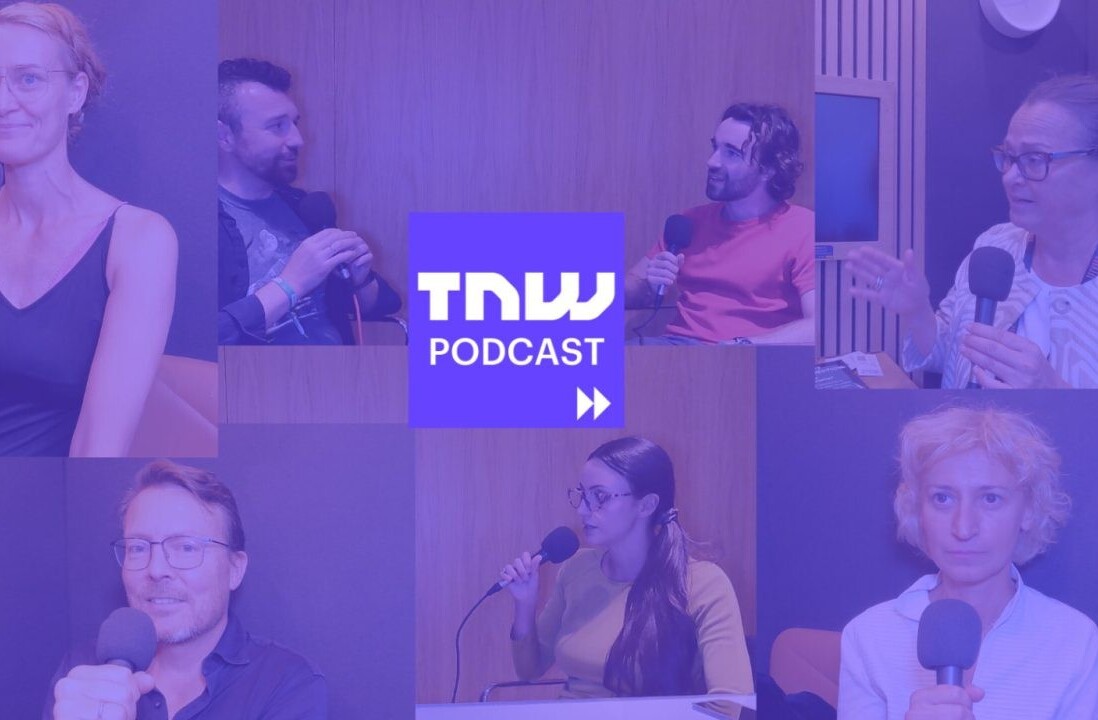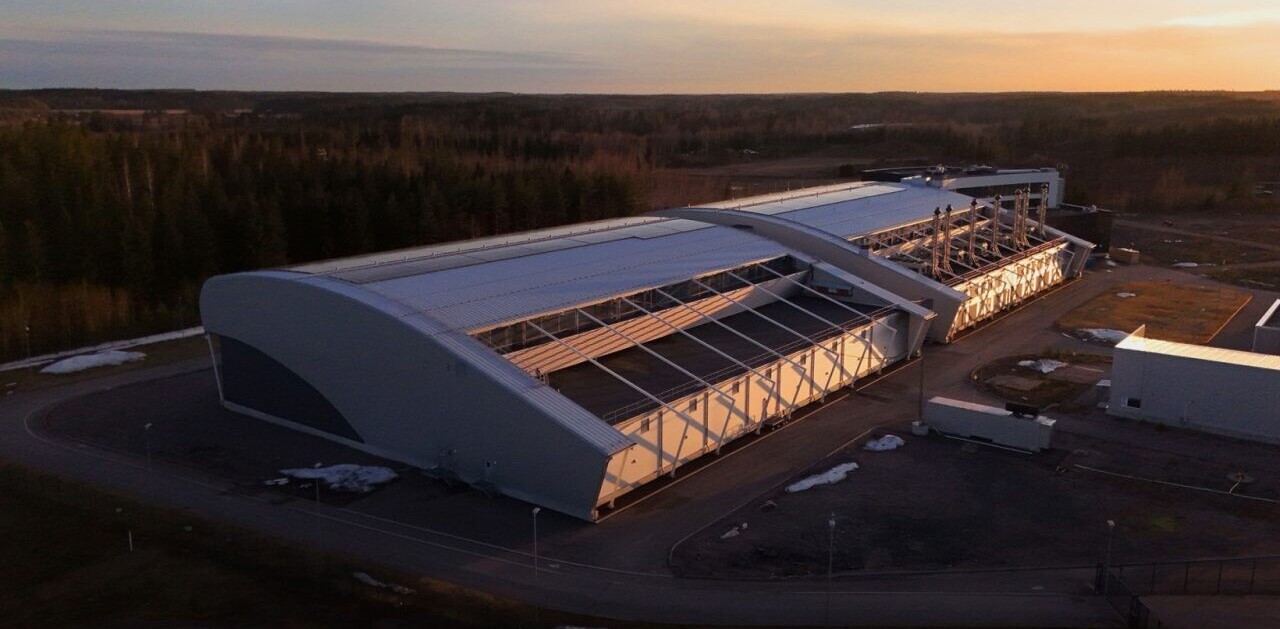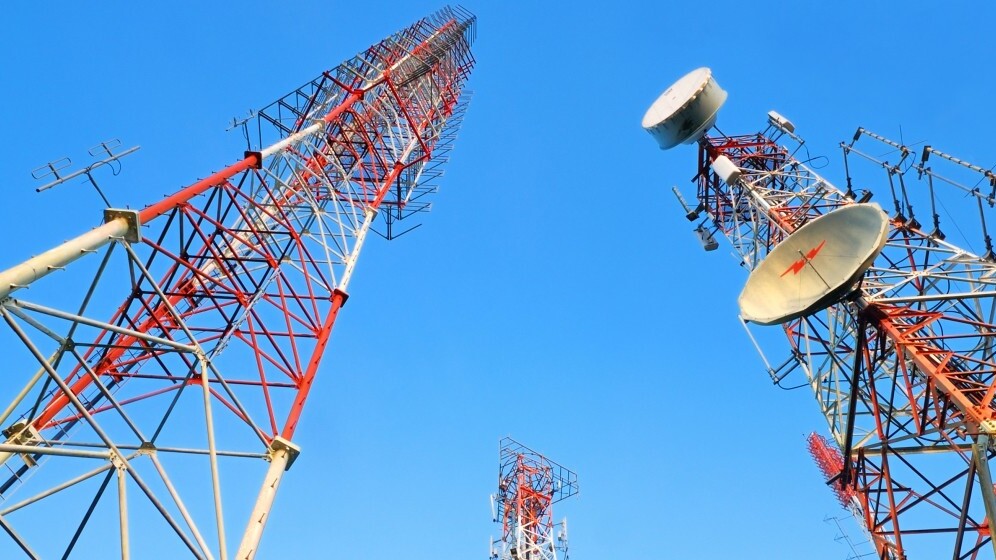
With 4G now becoming more ubiquitous in the UK (as well as around the world), early work is being done on the next next-generation data standard, currently being referred to as 5G.
You’d be forgiven for thinking then, with all the noise around the subject, that 5G implementation could be just around the corner. Forgiven, but wrong. It’s still a long way off in the real world. And before we go any further, if you’d rather read this on one page then the option is available.
Indeed, the UK’s national 4G networks are still only now pushing out into the farthest reaches of the country, and will be for some time to come.
5G, as a result, isn’t likely to arrive in the UK before around 2022, according to EE – the first company that received national clearance from UK telecoms regulator Ofcom to launch a 4G network in the UK, back in August 2012.
The International Telecommunication Union (ITU) has generally been working towards a date of 2020 for the first 5G services to come online, so the UK seems roughly in line with wider efforts and, looking at Europe more broadly, the European Commission recently signed an agreement with South Korea to research the topic.

Where we are now
Right now, 4G is still being pushed out across the country by EE, Vodafone, O2 and Three, providing typical connectivity speeds in the range of 5- 25Mbps. Although some networks provide a theoretical speed of up to 150Mbps, this will prove elusive for end-users right now.
In most of the major UK towns and cities, 4G coverage should be already in place, or on its way soon. Rural areas could also soon benefit from increased coverage if a ‘national roaming plan’ to tackle signal blackspots goes ahead.
Some networks – EE at this stage – are already offering ‘double-speed’ 4G LTE-A (that A stand for ‘Advanced’), providing a theoretical maximum of up to a blistering 300Mbps. Again, you’re not going to actually get that speed, but you might get something in the range of 60-70Mbps.
While the deployment of 4G in the UK was delayed on a number of occasions – Ofcom actually tried to start the process of auctioning spectrum back in 2008 but it wasn’t until January 2013 that the bidding process began – the same situation is unlikely to arise with 5G deployment given that it’s more of a continued evolution from 4G, rather than an overnight step-change. Nonetheless, that experience shows that there is still potential for delays even once some of the technological challenges have been overcome.
And although EE says 5G should arrive in 2022, its still not sure what kind of real speeds it’ll offer, but it’ll provide an average that’s well above 100Mbps.
EE tells TNW that it considers anything up to a theoretical maximum of 1Gbps as 4G and anything beyond that to be 5G. Generally, judging from trials set to take place in other countries (more on that later), we’re looking at theoretical speeds of up to 10Gbps.
A more formal technical definition of 5G from the likes of the ITU and WRC (World Radiocommunication Conferences) is due by 2016.
What’s the point?
With 4G LTE-A speeds of around 60-70Mbps already available in some areas of the UK – and only set to spread more widely, what’s behind the push for looking into 5G so early?
Well, more than just a demand for greater speeds, there’s an ever increasing demand on mobile operators to ensure that there is enough capacity to handle the needs of its users across the whole network.
Combine this demand with the fact that these things take time to get right (about a decade, give or take) and its a little clearer as to why networks (and nations) need to plan so far in advance.
The UK has been looking into 5G data standards for some time already – back in 2012, Huawei, Telefonica and Samsung ploughed £35 million into the University of Surrey’s 5G research center (shown above). Huawei, in 2013, then pledged to spend at least another $600 million on researching the next-generation standard in the UK.
As a key supplier of telecoms infrastructure – just in case you thought the company is best known for white-label devices – it makes sense that Huawei would want to be involved from the ground up in any research.
Up next: Battle of the bands
Battle of the bands
Being able to offer mobile data connectivity to customers (whether that’s 2G/3G/4G or 5G) is dependent on having enough spectrum to support the services that people want to use.
In the UK, 4G uses blocks of spectrum in the 800Mhz and 2.6Ghz range – although EE also uses 1,800Mhz to deliver its service as it was given permission by Ofcom.
In general, most operators own a slice of spectrum in each band. Some have more of one than the other and with slightly differing properties for each band – some are better at transporting data over longer distances, some are better for indoor coverage – each commanded its own premium when the auction finally went ahead.
As part of the auction, one operator (O2) won specrtum lots which also included an obligation to provide 4G coverage to at least 98 percent of the population, hence why nearly everyone should have at least one 4G option soon.
If you’re reading this thinking, “My signal is so bad, I can’t even make calls in my house right now”, then the good news is that as part of the 4G upgrade process, the older technology that handles texts and calls will improve. Ultimately, we’re aiming at a point where circuit switching and a traditional telephony network are a thing of the past. Instead, it’ll all be IP and VoIP.
More widely, work is going ahead to try and avoid the same situation as exists with 4G technology around the world – operators in different countries use different bands, so device compatibility can be a problem, particularly when new technologies first start to emerge.
Part of the EC’s agreement with South Korea to research and define 5G includes working on ways that bands could be standardized around the world; some operators are looking at the potential for using bands above 6GHz for providing 5G services.
Where we’re headed
Right now, Ofcom is in the process of starting to pave the way to clear yet more bands in order to provide more capacity for the UK’s voracious data appetite. Most likely for the immediate future, this will come in the form of the 700Mhz band currently occupied by some outdoor PMSE (Programme Making and Special Events) broadcasting.
Any auction of data to mobile operators likely wouldn’t take place before 2018, by which time we’ll be using around twelve times as much data as now, according to EE.
That’s also around that time that we’ll start to see LTE devices dominate the market as the technology matures. Sure, most high-end handsets support 4G LTE services now, and even a few mid-range models too, but it’ll be a while yet before 4G support is truly ubiquitous.
And with the ubiquity and familiarity of 4G LTE comes another change in user behaviour – a general settling in period during which we can expect data consumption to continue to rise.
Today, not everyone in the UK can access 4G, and not everyone has a 4G-capable device, but it’s an improving situation – coverage is still increasing massively and Android or Windows Phone-powered smartphones with 4G support can be snapped up for less than £100.
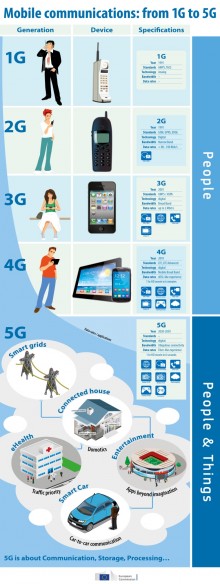 So, we’re now at a point where devices are available and new services are not just viable, they’re positively thriving – with streaming video being the main driver of increasing usage. You wouldn’t have been able to viably consume Netflix content via your smartphone just two or three years ago, but as the tech continues to filter down the device value chain, more and more people will use video service on their mobiles and tablets.
So, we’re now at a point where devices are available and new services are not just viable, they’re positively thriving – with streaming video being the main driver of increasing usage. You wouldn’t have been able to viably consume Netflix content via your smartphone just two or three years ago, but as the tech continues to filter down the device value chain, more and more people will use video service on their mobiles and tablets.
Today, between 40 and 50 percent of mobile data traffic on EE’s network is video streaming. By 2018, it expects that figure to be 67 percent. For a more general, non-EE view, it estimates that video usage across all mobile networks in the UK will account for a 76 percent by 2030.
And these estimates were made before Netflix announced it would start trialing 4K video, so it wouldn’t be surprising if we hit that figure long before 2030. According to EE, we could need between 5Mbps and 18Mbps just to stream 4K (and then 8K) resolution content.
Outside of video consumption, mobile gaming and augmented reality (AR) are expected to be the biggest drivers of data growth – nearly 70 percent of the non-video streaming usage. The rest of the traffic is expected to come from the sorts of services we have today, but with more emphasis on uploading large files and videos while out and about.
Out of the two, gaming draws more data right now, but with Google Glass and other similar devices already available and being offered more widely, it likely won’t be too long before augmented reality is far more commonplace in everyday life.
It’s not just the high bandwidth services though. With the growth of the Internet of Things (IoT), smart homes and an influx of connected devices – including cars – that we’re already seeing, these networks will also be providing a major part of data backbone for all these services too.
By 2020, it’s estimated that each person in the UK will account for a whopping 27 devices per person. It’s currently an average of 2.2 devices.
Up next: Beyond blistering speeds
Beyond blistering speeds
Continually evolving mobile data technology isn’t just about creating faster upload and download speeds, it’s also about reducing latency and increasing the overall stability of the network. If you don’t do that, it all becomes too congested to work properly anyway.
In the days of GPRS connectivity, a latency of around 750 milliseconds (ms) was the average, once a connection had already been established – which caused another delay in itself. With 3G/HSPA technology that latency typically fell to less than 100ms, and with current 4G LTE technology, it has dropped again to between 40ms and 60ms.
For 5G, we can expect that to fall below 10ms for applications that require low latency – messaging, videos, online gaming, etc. There are plenty of reasons why less of a delay is a good thing, and while you might have assumed that, say, increasing download speeds is a better way to improve video performance across a mobile network, it’s actually improving latency (because app data is being broken down into increasingly small ‘packets’) that will go hand-in-hand to pave the way for the future of many services.
What this ultimately means is that while the evolution of 2G, 3G and 4G have focused on blistering speed increases, the advent of 5G will likely be focused around things like maintaining higher numbers of connected devices, better spectral efficiency (passing more data through the same unit area), better coverage (and therefore less outages) and lower battery consumption for end users.
So, while 5G will provide very fast download and upload speeds, it’s about maturing the other parts of the experience as well, to ensure that the services that will run across the networks can do so reliably. In the best scenario, it will be a super-fast and super-efficient technology.
Up next: 5G beyond the UK
Beyond the UK
South Korea
Obviously, the UK isn’t the only country looking into 5G technology. Notably, South Korea plans to start testing out 5G networks as early as 2017, although it likely still won’t be a commercially available service before the end of 2020, at the earliest.
By that time, it will have been researching 5G for at least 12 years, having started to look at it first back in 2008. It has already pledged to spend at least $1.5 billion to achieve its goals.
Europe
South Korea isn’t going it alone though. In December last year, Europe pledged €700 million to research 5G over the course of seven years – which is expected to be matched by up to €3 billion from industry. Huawei alone has pledged to spend at least $600 million researching 5G by 2018.
Following that, Neelie Kroes announced this month that the European Union would jointly research the topic alongside South Korea to ensure that Europe isn’t left behind, as it somewhat has been with 4G rollouts. It should also help avoid any potential device incompatibilities that would arise out of using different 5G technologies.
As part of the agreement (PDF), a memorandum of understanding was also signed between the 5G Infrastructure Association (which includes Alcatel-Lucent, Deutsche Telekom, Ericsson, Nokia, Orange, Telecom Italia, Telenor and Telefonica among other members) and South Korea.
US
Somewhat strangely, it seems that operators and other technology companies in the US are less keen to start looking into the next generation of data connectivity just yet, and as such, activities are fewer and further between.
Last year, Intel formed an Intel Strategic Research Alliance around 5G and although this isn’t specific to the US, Verizon was the first industry partner to sign up, alongside several prestigious US universities.
It’s likely that as research gathers pace elsewhere, US operators will start looking more closely at how it can be applied to their own domestic market, and of course, some will be taking part in other joint research efforts elsewhere.
Japan
NTT Docomo in Japan announced in May that it would begin working with mobile technology companies like Alcatel-Lucent, Ericsson, Fujitsu, NEC, Nokia and Samsung with testing 5G technology.
The operator is currently looking at potential uses of bands above 6GHz and plans to start carrying out indoor tests at an R&D center in Yokosuka before the end of this year. Its first outdoor trials are scheduled to begin next year.
6G?
No.
Although this seems like a facetious end to an article looking ahead to 5G technology, it’s actually not if you believe EE’s network architect Andy Sutton.
“There may not be a 6G if we get 5G right, because we may change the way we evolve networks away from a main generational shift, it’s going to be a more subtle evolution of capacity and capability based on some [of the technologies] from the 5G world, including software defined networks and virtualisation techniques,” Sutton said.
So there you have it, all we need to do now is get 5G right.
Image Credits – Shutterstock (1) (2) (3) (4)/ University of Surrey
Get the TNW newsletter
Get the most important tech news in your inbox each week.
